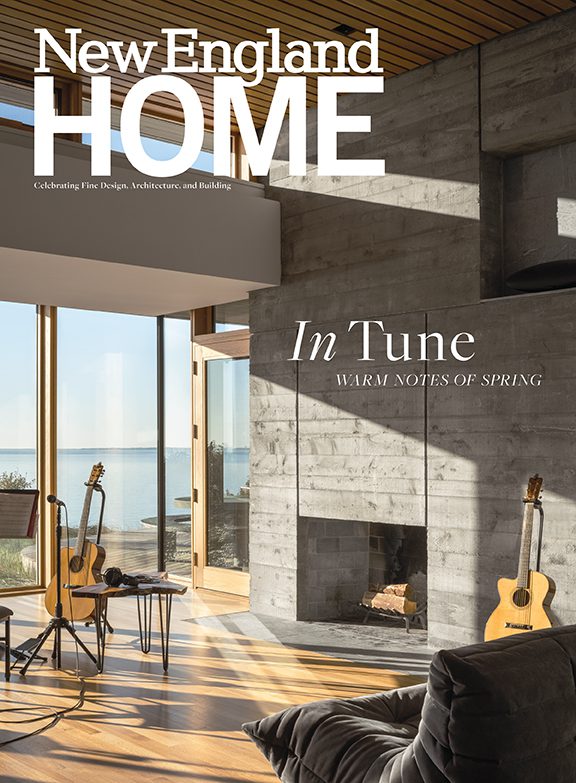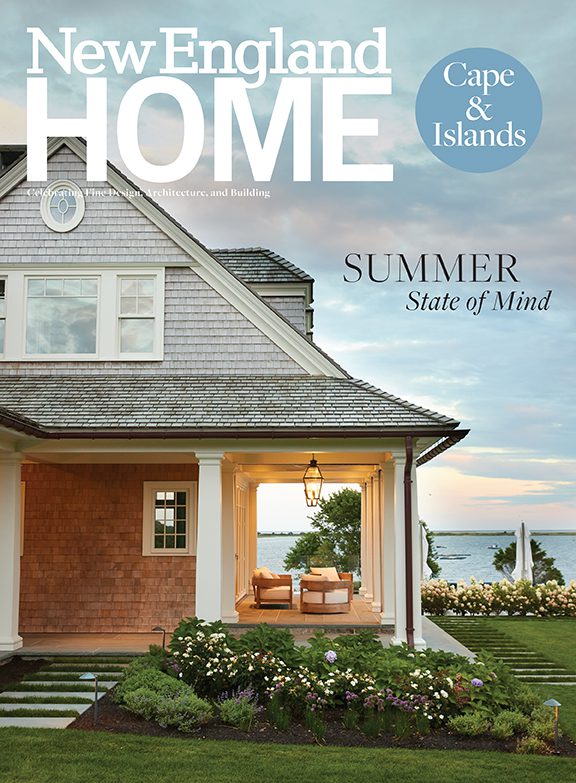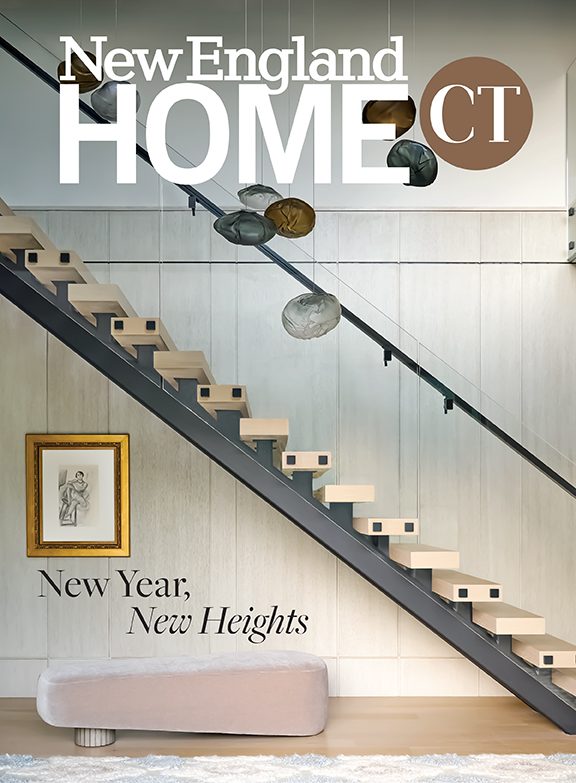A Study in Elegance
May 6, 2011
Text by Regina Cole Photography by Michael Partenio
Nannette Lewis approaches design with more instinct than calculation. For example, this subtle, yet captivating interior in one of Boston’s superb contemporary Back Bay buildings, the Belvedere, draws on her knowledge of her client, not on any set of rules. Nonetheless, this home could serve as a classroom exercise on how to turn a particularly tricky challenge into an opportunity.
The building, you see, is not square. Its curved façade, so graceful a border to a large urban plaza, means that the view-oriented rooms have no parallel walls. Instead of the squares and rectangles, or even circles, octagons or ovals, that commonly compose the interior spaces of Western buildings, these rooms are trapezoids. Lewis’s design establishes balance and proportion with banks of built-ins, which vary from very shallow to very deep depending on where they lie along the convex façade.
“When we began, the space was a shell,” Lewis explains. “I knew I wanted to panel the walls, so the millwork straightened them out.”
This solution, so effective as to seem self-evident, also appears to serve an entirely different purpose: to provide the prodigious amounts of storage space that surely are necessary to create such serene, Zen-like elegance.
But Lewis explains that the neoclassical paneling reflects her client’s taste and preferences, not simply the demands of housekeeping. Stuff isn’t hastily shoved into cabinets before guests arrive; this is how the homeowner lives. “People who like this kind of decor like calm, not clutter,” she says. “My client gave me carte blanche because I understand her taste.”
Therein lies the success of this project. Paneled walls that hide a bar, TV and other necessities are not only a skilled designer’s carefully orchestrated answer to an architectural challenge; they express the refined aspects of the homeowner’s personality, beautifully articulated with furniture-level cabinetmaking. The fact that the design aligns slanting walls seems like a happy side effect, not the solution to the geometry problem that sparked Lewis’s thought process.
Contemporary and classic merge in the 2,800-square-foot condominium that consists of a large living room, an adjoining dining room, an intimate den, full and half baths, a bedroom and a surprisingly spacious-feeling eat-in kitchen. Grounded with hardwood flooring dyed ebony, off-white walls enclose what Lewis calls “an edited mix” of white-upholstered contemporary furniture, English and Biedermeier antiques, French lamps and clocks, and contemporary and neoclassical bronze sculpture. As the rooms flow one after the other along the windowed façade, the color scheme gradually deepens from the ethereal off-white, gray, pale blue and green of the bedroom to the saturated, grayed teal in the den at the apartment’s opposite end.
While such carefully composed decor is hardly background, it stands in service to what’s outside the windows. With rooftops climbing a nearby hill and a massive dome dominating the vista to the north, the view evokes a European city. Stationary silk panels—soft blue-gray in the living room, gray in the dining room—frame the scene. Translucent shades descend at the push of a button to soften the glare without obscuring the cityscape. “She opted for a formal dining room instead of another bedroom,” Lewis says of her client. “That tells you a lot about how she lives. She loves to give dinner parties. At night, the view creates a magical atmosphere in the dining room.”
The adjoining living room is dominated by one of Claire Klarewicz-Okser’s large-scale paintings of beautifully dressed, enigmatic people who manage to look lonely while clustering close together. “That large piece of art influenced the design,” Lewis says. “I decided to keep everything soft so as not to fight the painting.”
That most classical of design motifs, the Greek key, serves as a visual anchor throughout the apartment. First glimpsed in the entry as a raised border on an ebony custom chest, it recurs in the mirror frame hanging on the wall above. In the living room, it encircles the apron of a round, marble-topped Biedermeier center table. We see it again in the bedroom, embroidered in gray on the meander border of snowy linens. Marble obelisks, alabaster urns, neoclassical student drawings and classical sculpture underscore the timeless sensibility.
The half bath located off the entry forecasts the decor’s clean lines and subtle colors with gray fabric walls, gray limestone floor tiles and a transitional pedestal sink formed in traditional white marble striated with gray veining. Gray leather banquettes around a sleek table turn a corner of the kitchen into a breakfast nook with panache. Lewis used leather in a paler gray to upholster the klismos-inspired dining chairs. Everywhere, soft shades of gray express the elegant restraint that defines this home.
Indeed, Lewis believes in consistent interiors. “You should be able to move anything from one room into another,” she says. “That applies even to the den, which is not white.”
Doubling as a guest bedroom, the den is also the only room not oriented toward the view. A gilded six-panel Chinese screen covers the window wall, creating a luxurious, intimate ambience. Cherished by a homeowner who has collected art while traveling the world, the screen survived a rigorous paring-down process when she moved from a large house to this much smaller condominium.
“We had to edit everything out,” Lewis recalls. “Only the very best pieces came here.” One of those items, an antique English wall clock, hangs on the master bedroom wall. Along with a pair of bedside tables, it provides a dark counterpoint to the pale walls, floor and furnishings. It also acts as a distant focal point: its mahogany curves are visible from the apartment’s opposite end. While many designers and homeowners would use a timepiece in an entry hall or living room, this placement represents Lewis’s artful way with color, proportion and form. Ever since antiquity, designers have placed a commanding object at the end of an enfilade of rooms to create flow, depth and a pleasing sense of completion. In this case, the focal point is also eminently practical.
For Lewis, such choices are second nature, or she makes them sound so.
“Doing design,” she says, “is having good taste.”
Interior design: Nannette Lewis
Share
![NEH-Logo_Black[1] NEH-Logo_Black[1]](https://b2915716.smushcdn.com/2915716/wp-content/uploads/2022/08/NEH-Logo_Black1-300x162.jpg?lossy=1&strip=1&webp=1)




















You must be logged in to post a comment.